The Euclid satellite spacecraft is now officially an observatory: Euclid’s two instruments are seeing ‘First Light’ – recording the first engineering observations of the sky with a fully aligned and focussed telescope.
In the current phase of commissioning, all aspects of the Euclid mission – spacecraft, instruments, and now telescope – have successfully passed crucial milestones. Since the initial acquisition of Euclid’s communication signal 45 minutes after launch, and an early checkout and orbit correction manœuvre, a team of ESA, industry, and Euclid Consortium instrument specialists have tirelessly worked through a long, pre-planned list of steps. The electronics of both instruments were turned on already on day 2 to monitor the temperature of each component. Following a ‘bakeout phase’ where Euclid was turned more towards the Sun than during later survey operations, to get rid of residual water moisture trapped inside, the whole spacecraft has been cooling down to operational temperatures. After the first days, the instrument team switched on the detector systems of both the visible imager (VIS) as well as the near-infrared spectrometer and photometer (NISP). The initial images received light through an unfocussed telescope, and a spacecraft without controlled guiding of its pointing.
This has now changed! After more than a week of alignment, and focus finding of the secondary mirror M2, as well as using initial guiding of the spacecraft to point at a constant commanded point on the sky, both VIS and NISP managed to record their first engineering images, with all systems functioning, and the telescope in focus: Euclid sees ‘First Light’.
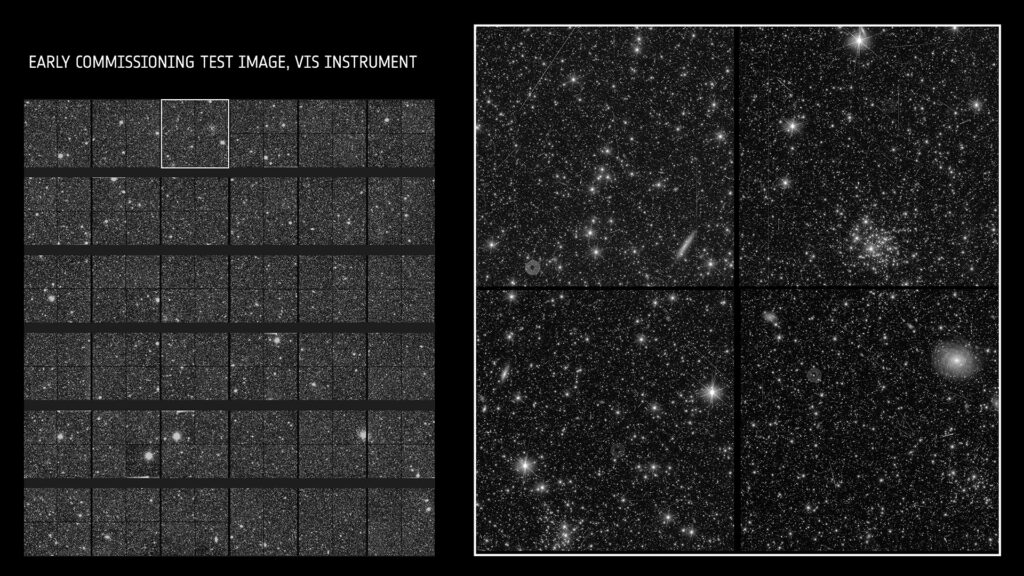
Credits: © ESA/Euclid/Euclid Consortium/NASA, CC BY-SA 3.0 IGO
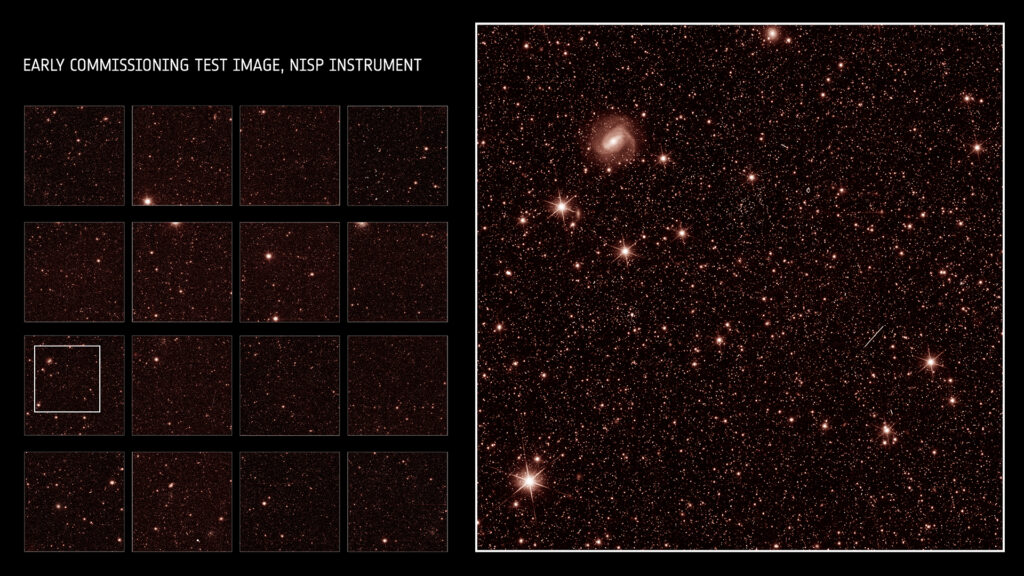
Credits: © ESA/Euclid/Euclid Consortium/NASA, CC BY-SA 3.0 IGO
To put these images in perspective: each of these high-resolution cutouts shows an area of 7×7 arcminutes², which is 1/14th of the area of the moon on the sky (the full detector focal plane area is 2.5x the moon area in one image). Euclid will observe 1 million of these 7×7 arcminute² areas over the course of its survey in the coming 6 years! With much longer integration times than these first light engineering images.
This ‘First Light’ moment is very special as it is the time when all scientists, engineers, and technicians involved in making Euclid finally know that more than a decade of planning, designing, and constructing has paid off.
ESA’s Euclid project manager Giuseppe Racca:
“After more than 11 years of designing and developing Euclid, it’s exhilarating and enormously emotional to see these first images, it’s even more incredible when we think that we see just a few galaxies here, produced with minimum system tuning. The fully calibrated Euclid will ultimately observe billions of galaxies to create the biggest ever 3D map of the sky.”
Carole Mundell, ESA’s Director of Science agrees:
“Our teams have worked tirelessly since the launch of Euclid on 1 July and these first engineering images give a tantalising glimpse of the remarkable data we can expect from Euclid.”
Yannick Mellier, Euclid Consortium lead adds:
“The outstanding first images obtained using Euclid’s visible and near-infrared instruments open a new era to observational cosmology and statistical astronomy. They mark the beginning of the quest for the very nature of dark energy, to be undertaken by the Euclid Consortium.”
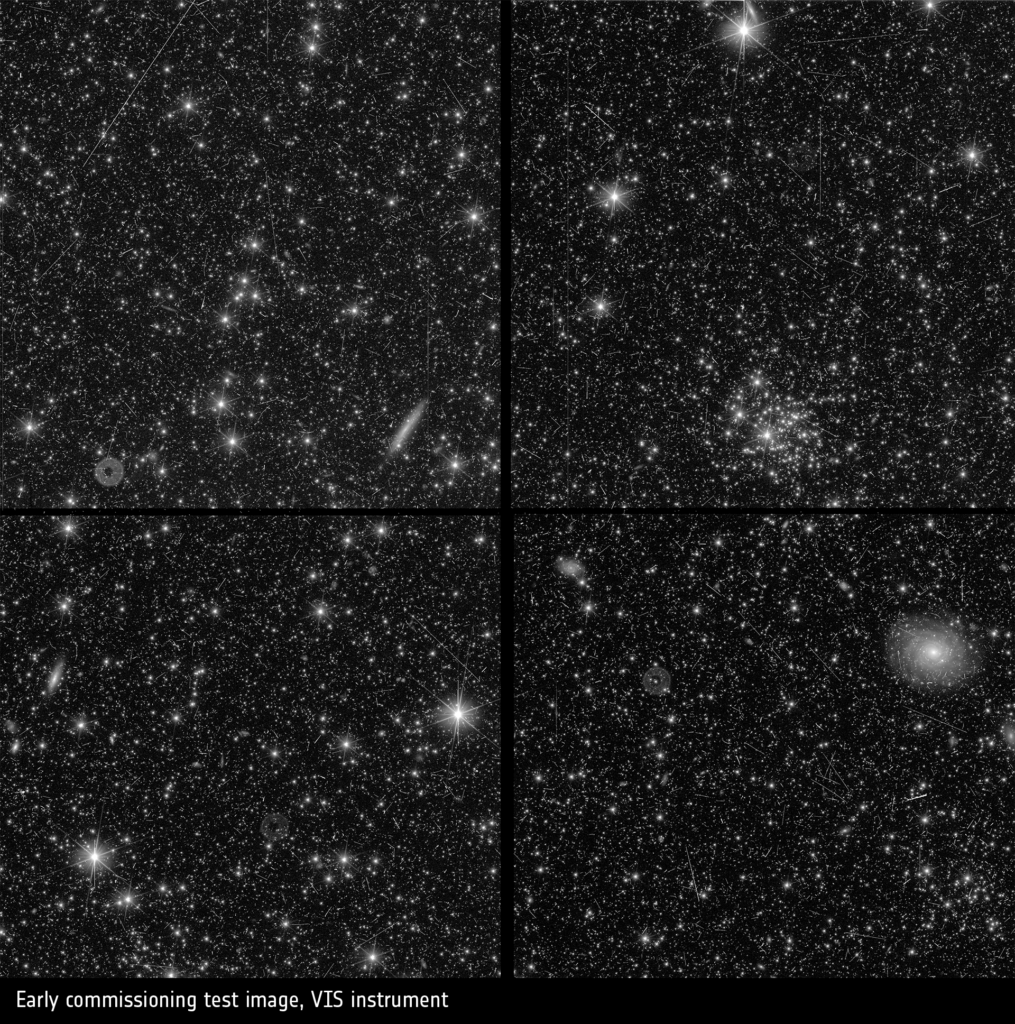
Euclid still has a way to go to start its survey. A few commissioning steps are still left, then followed by 8 weeks of a performance verification phase. In this phase, all properties of the instruments are reassessed, as for the first time Euclid is orbiting in its ultimate environment of cold temperatures, vacuum, and radiation. The instrument teams will command telescope and instruments to observe a substantial number of images in different configurations, that will be used to calibrate Euclid’s survey science images later on. These are updated characteristics of the visible light and near-infrared detectors, among others models for straylight, overall sensitivity, optical and electrical ‘ghost’ signals, as well as a detailed mapping of how point sources are imaged in both instruments, just to name a few.
But the Euclid Consortium’s instrument teams are currently just very happy about what has already been achieved:
Mark Cropper from University College London let the development of VIS:
“I’m thrilled by the beauty of these images and the abundance of information contained within them. I’m so proud of what the VIS team has achieved and grateful to all of those who have enabled this capability. VIS images will be available for all to use, whether for scientific or other purposes. They will belong to everybody.”
Reiko Nakajima from University of Bonn and VIS instrument scientist says:
“Ground-based tests do not give you images of galaxies or stellar clusters, but here they all are in this one field. It is beautiful to look at, and a joy to do so with the people we’ve worked together with for so long.”
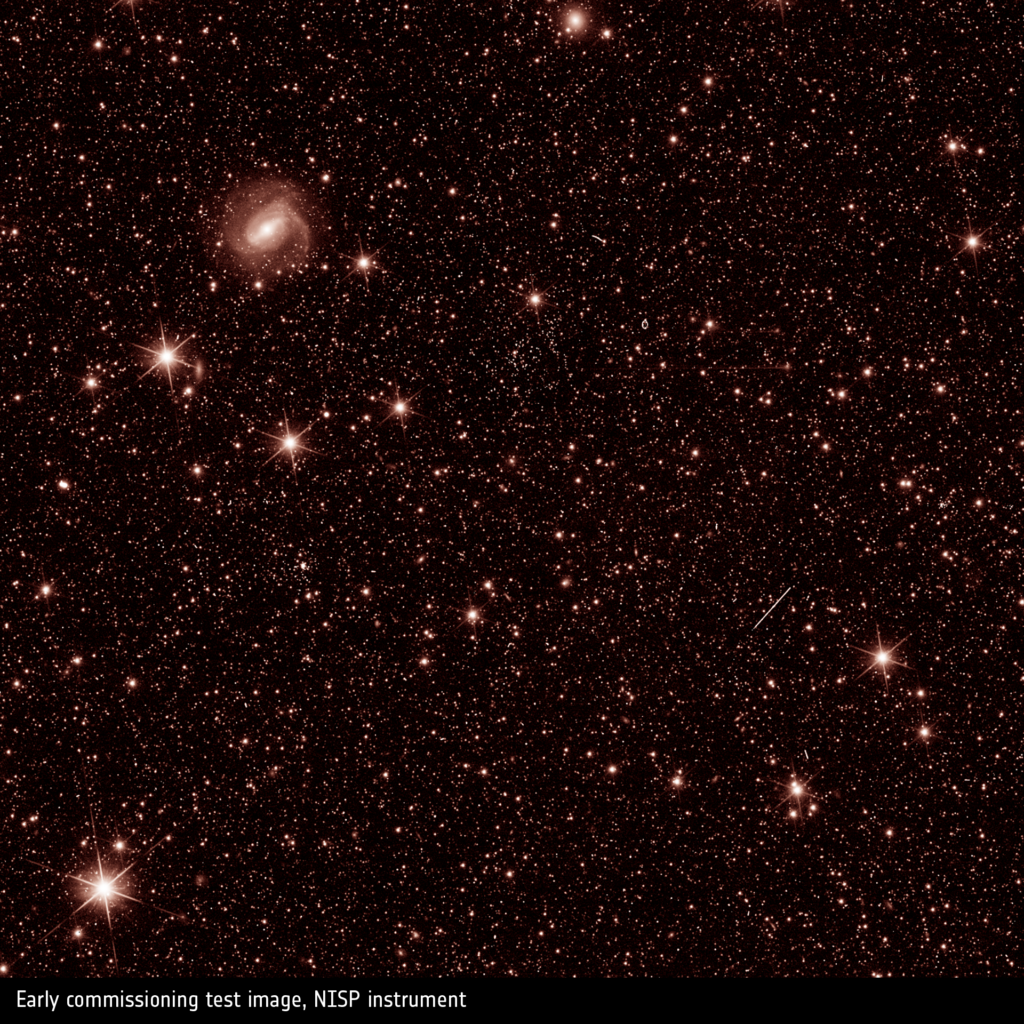
Knud Jahnke, NISP instrument scientist from Max Planck Institute for Astronomy:
“We’ve seen simulated images, we’ve seen laboratory test images – it’s still hard for me to grasp these images are now the real Universe. So detailed, just amazing.”
William Gillard, NISP instrument scientist from Centre de physique des particules de Marseille, adds:
“Each new image we uncover leaves me utterly amazed. And I admit that I enjoy listening to the expressions of awe from others in the room when they look at this data.”
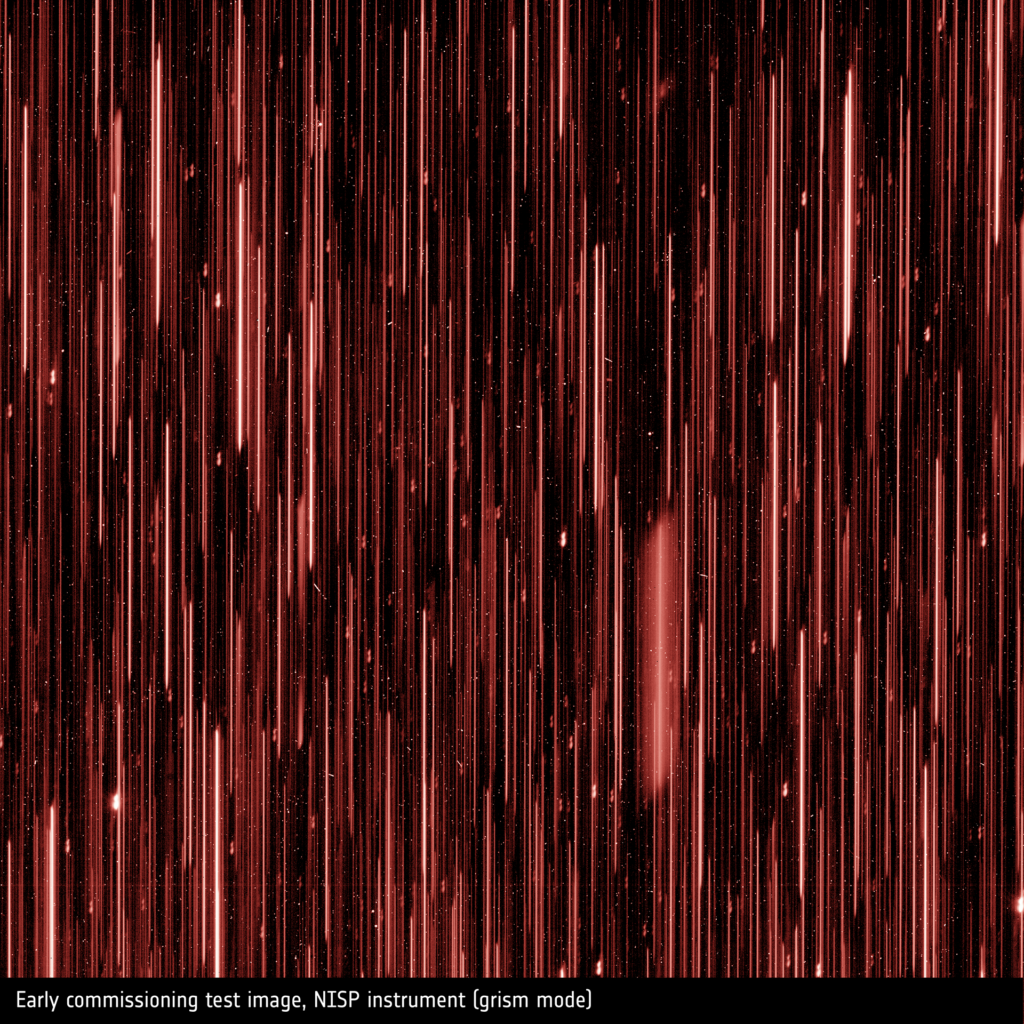
While the upcoming calibration observations are fundamentally necessary to produce science-ready data and start the mission’s 6-year survey, Euclid’s ‘First Light’ is a major step, demonstrating that the astronomy community should really step into the starting blocks. Euclid will start surveying the sky to an unprecedented quality very soon – and we now have the images to prove it.
Further information can also be found in the ESA Euclid First Light press release.



